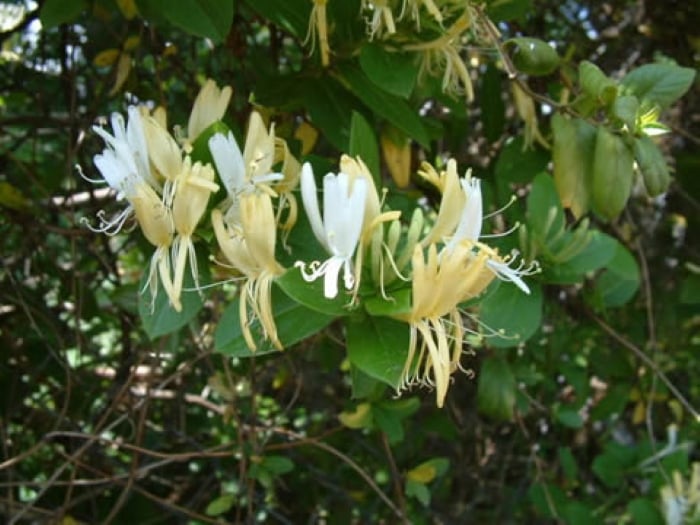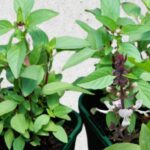1. Basil
Basil leaves have a cooling effect and are used to treat ailments such as the common cold, fever, dry lungs, and cough. They are often paired with ginger. Adding a few basil leaves when cooking fish, shrimp, or crab can help neutralize the fishy smell and reduce allergies.
Try blanching the leaves in boiling water, then adding a bit of hot oil, salt, and pepper for a delicious and nutritious treat.

Basil Plant
Basil is highly adaptable and easy to grow. Simply sprinkle some basil seeds into a pot of soil, cover with a thin layer of soil, and maintain a temperature of 5°C for germination.
Caring for basil is simple. Ensure the soil is loose and fertile, and provide ample sunlight for the best leaf yield.
2. Mint
Mint is easy to grow, but it requires timely watering. If it doesn’t receive enough water, its leaves will fall off. When planting, be sure to water it regularly.

Mint Plant
For dry soil, water through the trenches to reach the roots. Keep the area weed-free and remove any old, withered leaves at the base of the plant.
Mint thrives in sunny conditions, so if you’re growing it indoors, place it in a sunny spot and rotate it regularly.
3. Goldenrain Tree
Goldenrain tree flowers are the buds of the

Goldenrain Tree Flowers
Additionally, goldenrain tree flowers have medicinal properties that are lesser known. They can help relieve wind-heat in the meridians and stop dysentery, among other benefits.
This plant isn’t picky about soil quality and is easy to maintain, making it suitable for balconies or gardens. Providing a trellis for the plant to climb will enhance its growth.
4. Chrysanthemum
Chrysanthemums are the second most popular flowers globally, used not only for decoration but also as a herbal tea with numerous health benefits.

Chrysanthemum Flowers for Tea
Drinking chrysanthemum tea over an extended period can benefit the liver, treat dry eyes, and promote nerve relaxation, reducing headaches.
Scientists have identified over 40 varieties of chrysanthemums, differing in shape, size, and color. Only the yellow and white chrysanthemums are used for tea.
Chrysanthemums are highly adaptable and aren’t particular about soil type, though they thrive in loose, fertile, and moist soil or sandy loam. Keep the soil moist, but be careful not to overwater, as this can cause root rot. Chrysanthemums prefer a sunny environment, and a lack of sunlight will result in reduced flowering.
Unlock the Secrets to Wealth and Health: Transform Your Home with the Power of Herbs and Feng Shui
This particular vegetable is a popular and fragrant variety, perfect for any household to grow in their homes. With its vibrant, lush leaves and sturdy stems, this vegetable is a must-have for any family wanting to add a touch of freshness and health to their meals. Easily grown and even easier to fall in love with, this vegetable is a true delight for the senses.






































